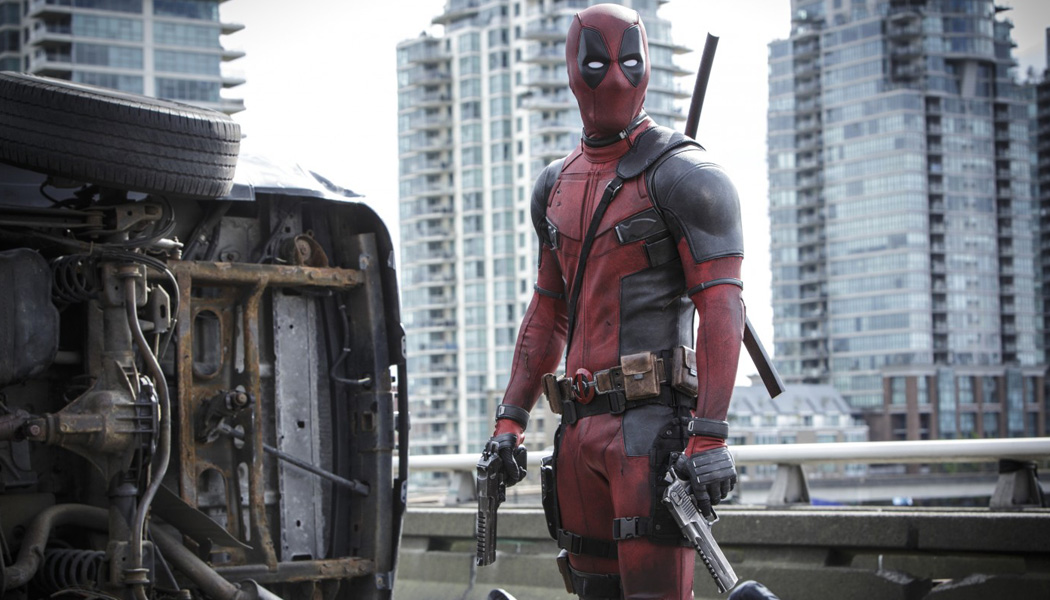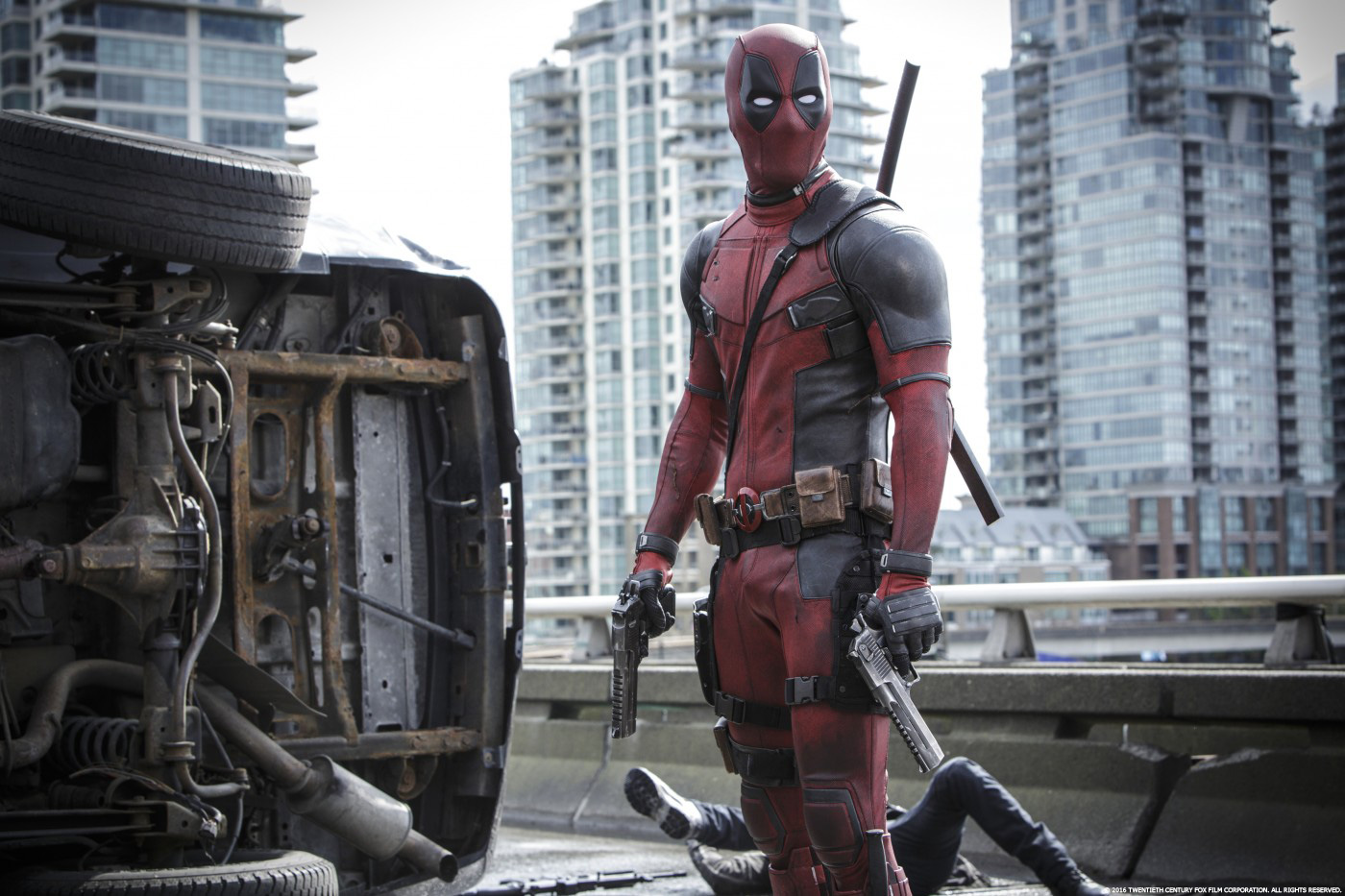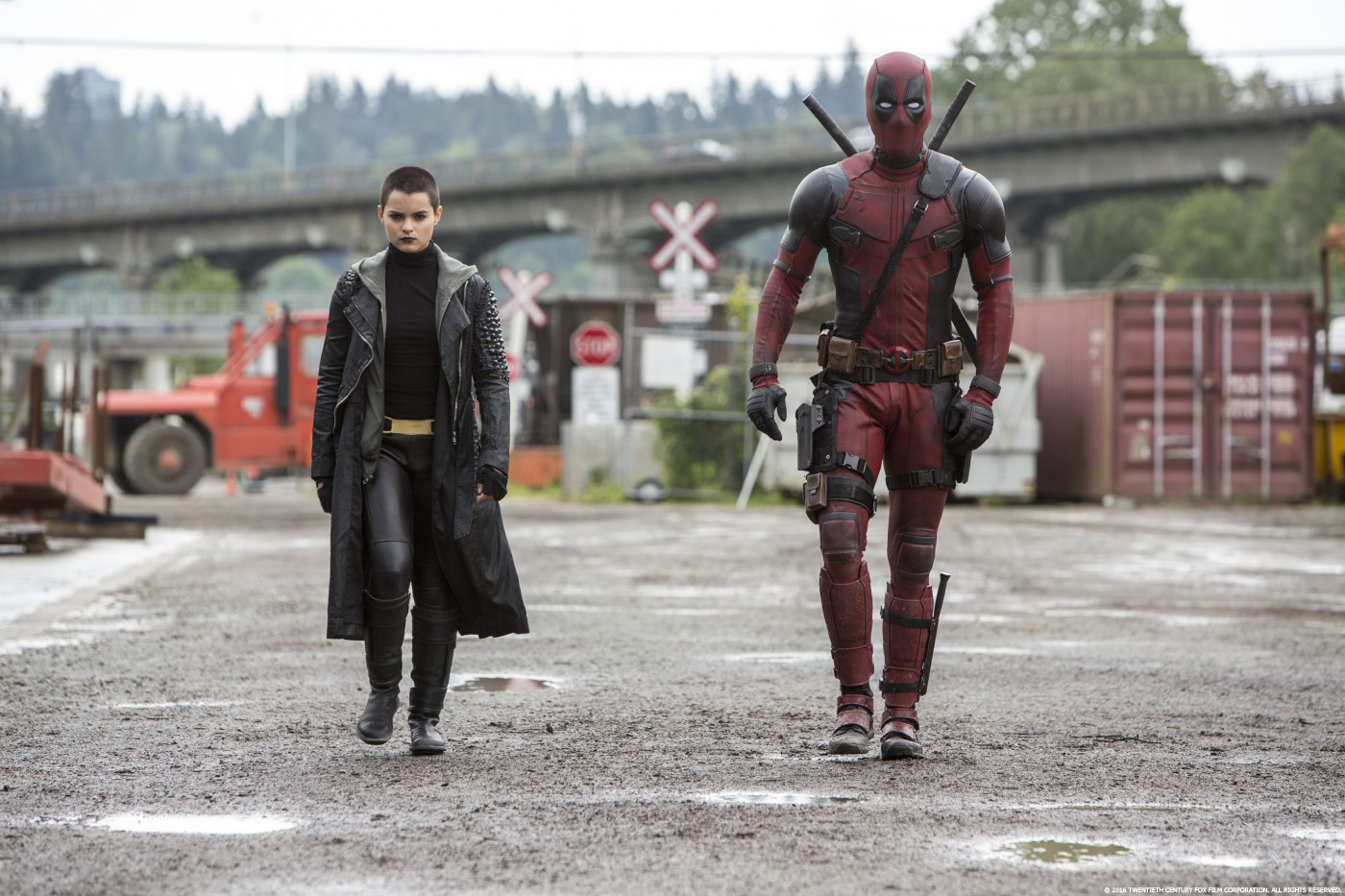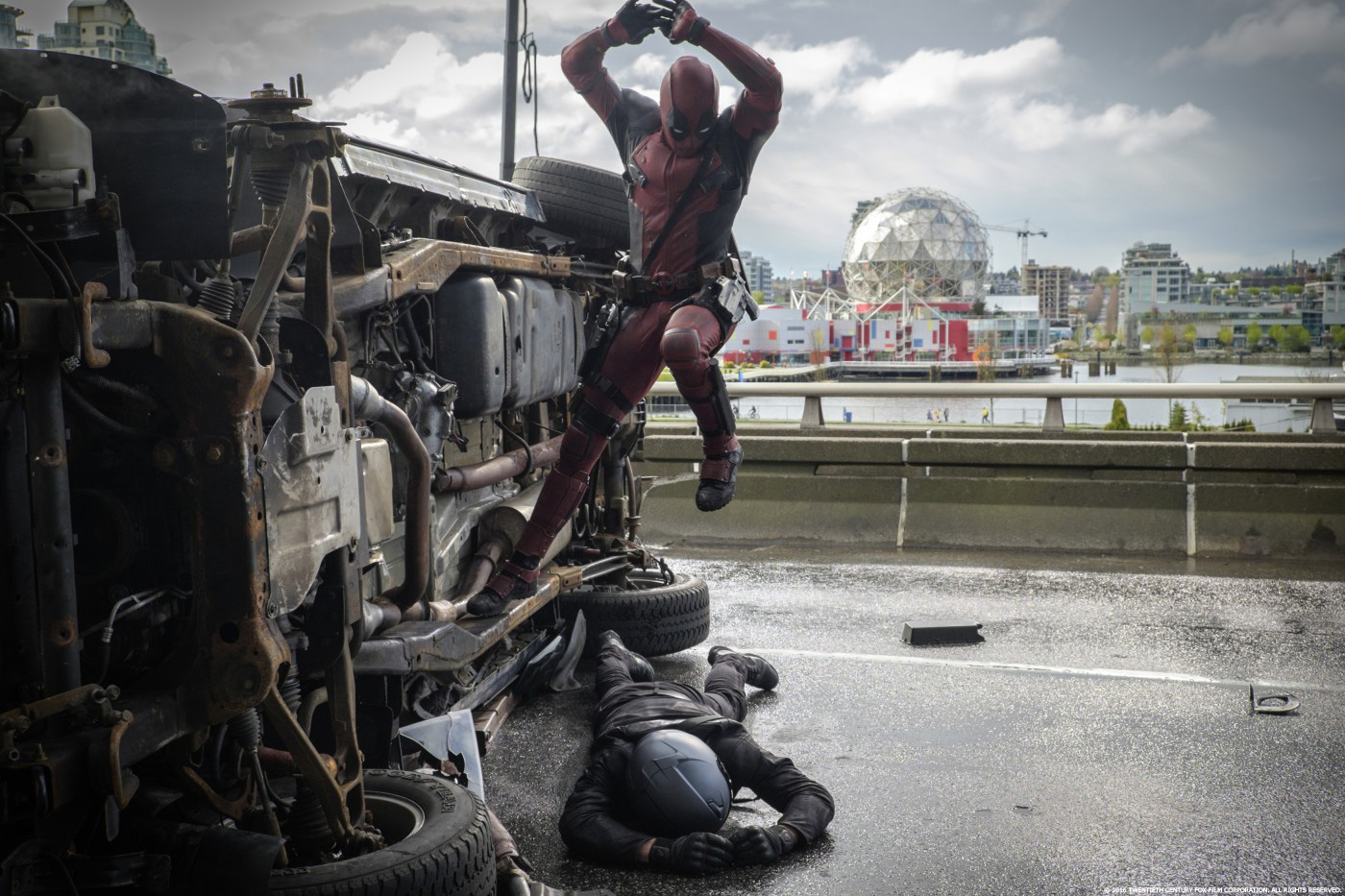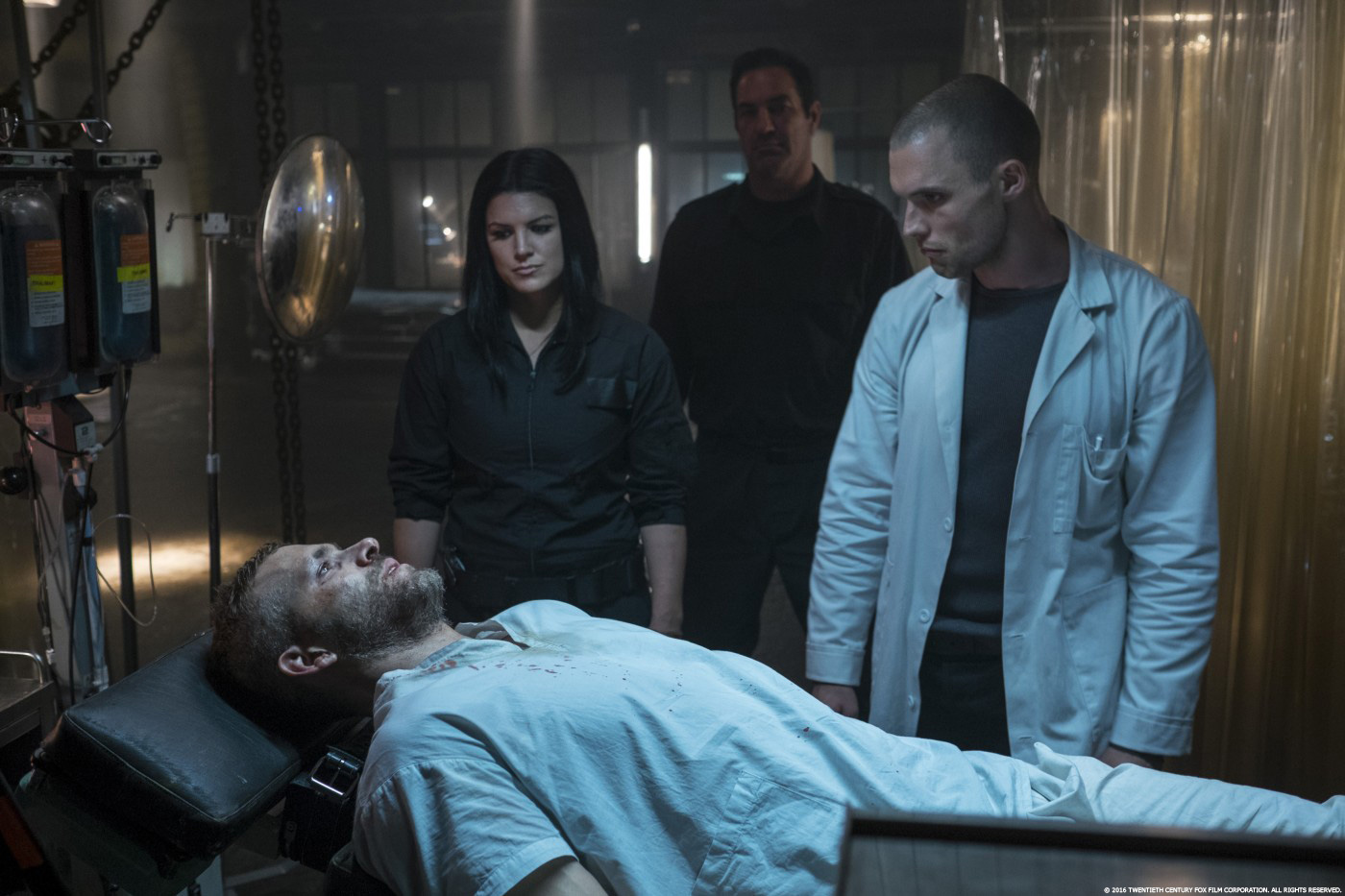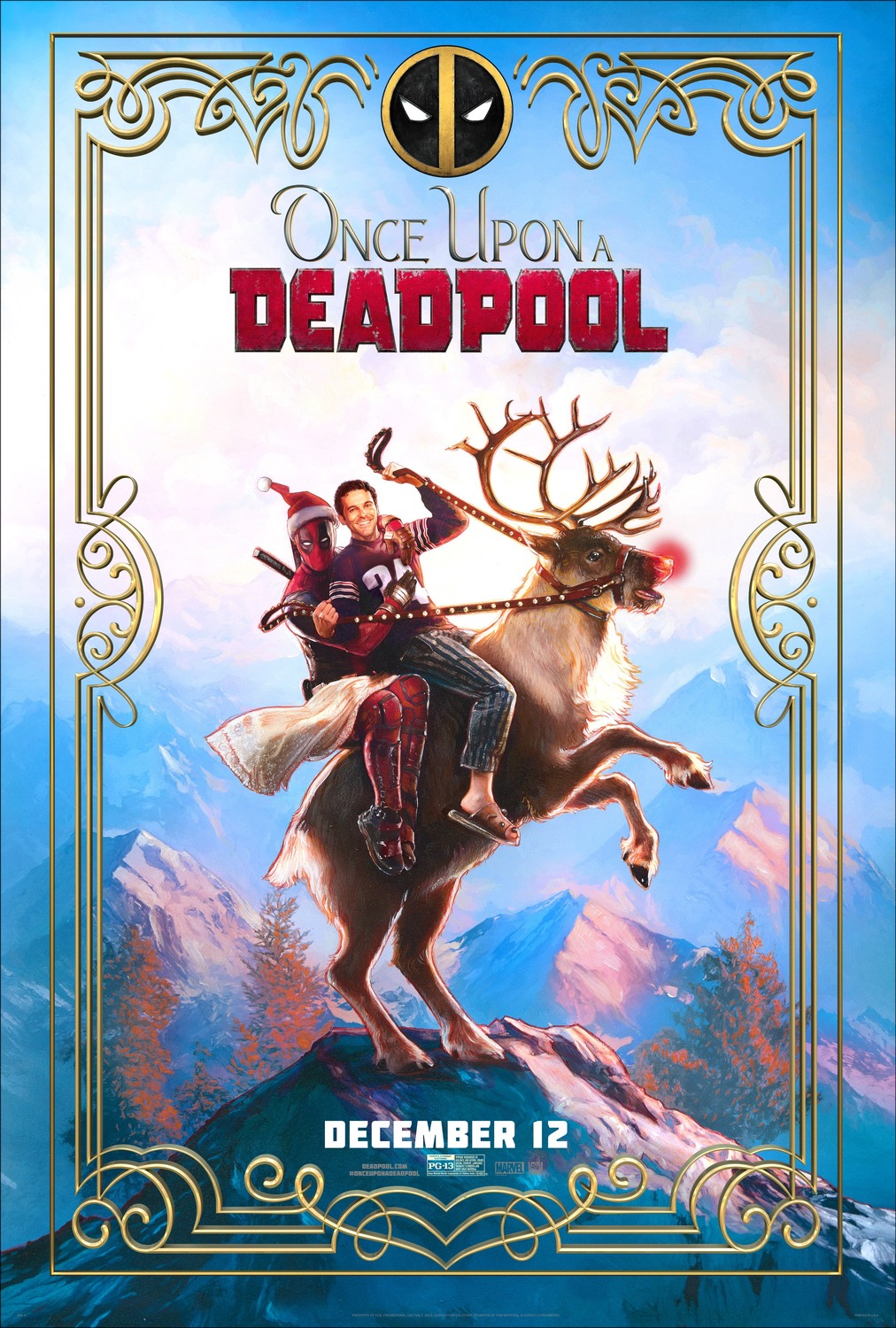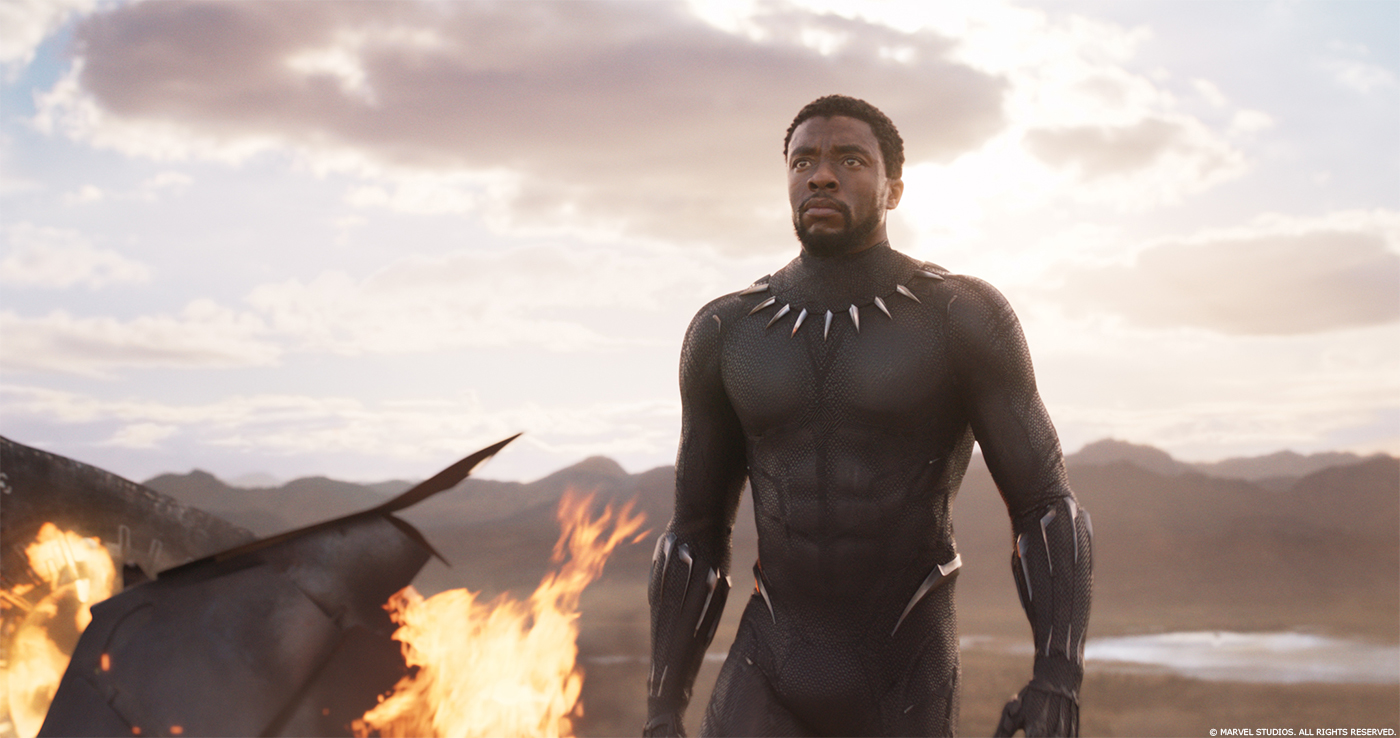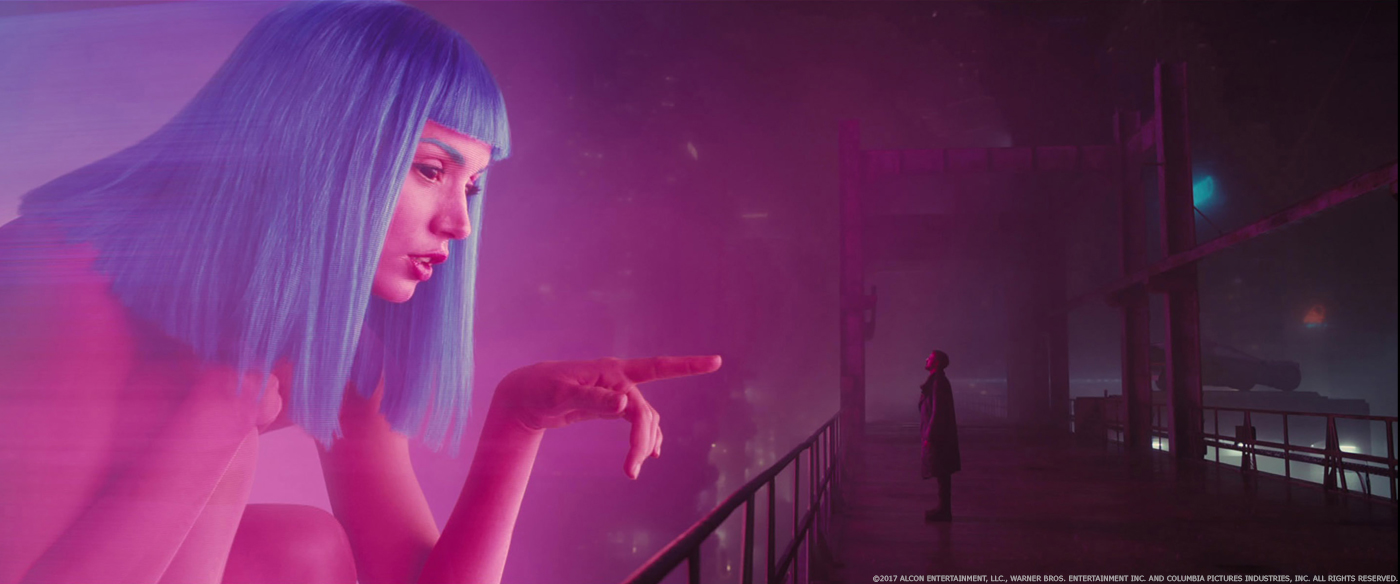Jonathan Rothbart began his career in VFX at Industrial Light & Magic in 1995. He worked on films like DRAGONHEART, MEN IN BLACK or STAR WARS: EPISODE I – THE PHANTOM MENACE. In 2000, he created the studio The Orphanage with Scott Stewart and Stu Maschwitz. He will oversee the effects of many films like HERO, HELLBOY, SIN CITY or IRON MAN. In 2010, The Orphanage is closed and Jonathan becomes production side VFX Supervisor and take care of the effects of LEGION, PRIEST and AFTER EARTH.
What is your background?
I graduated from the University of Arizona in 1992 and then worked in advertising and computer game animation for a few years. I was hired to work at ILM in 1995. It was a huge break for me. I started in the art department there, working on a ton of different films. Then in 1996, we formed a small group at ILM known as the Rebel Mac Unit. We were a boutique facility within ILM. We were trying to break out of the normal ILM pipeline and work on shots with a one artist one shot mentality. It was super fun. I had an amazing experience, getting to be at ILM working on amazing films, designing amazing shots and getting to do every part of the shot. I learned a ton. In 2000, I left ILM and started my own company with Scott Stewart and Stu Maschwitz, called The Orphanage. That was also an amazing experience and one of which I am very proud. We were one of the early small facilities, using off the shelf software, competing and working on high end movies. It was a lot of hard work, but extremely rewarding. We closed The Orphanage in 2010, and I have been a production side VFX supervisor ever since.
How did you got involved on this show?
I met with Tim Miller several months before production. I didn’t know him before that, although I knew a lot about him, as I had always been an admirer of Blur Studio (Tim Miller’s company) and the work they had done. So, I was psyched to get a chance to sit down and talk with him. We have very similar backgrounds in the industry and hit it off right away.
That’s the first feature film by Tim Miller. How was the collaboration with him?
Tim is awesome. I loved working with him. We had a great rapport, and I enjoyed how direct he was. He was very collaborative, giving me the latitude to experiment and problem solve. It was truly a fantastic experience.
What was his approach about the visual effects?
I always try to find ways to get as much in camera as possible. I am a big believer in the theory that there is nothing like the real thing. That being said, we had a lot of all digital characters and environments. We were on a pretty tight budget, so we really had to find a balance between not just what would be the most technically effective way to do the work, but also, what would be the most cost effective way to create the work. We spent a lot of time in prep going back and forth about how to approach various sequences and effects. Tim is pretty fearless when it comes to CG and would usually challenge me to create fully CG shots or characters that would be right up in camera.
Can you describe one of typical day during the pre-prod, on-set and then on post?
Well. Prep is a constant scramble to figure out how you are going to get so much done in such a tight shooting schedule. You spend most of your day either planning and breaking down sequences or meeting with other departments. We put a lot of time and planning into the Colossus Angel Dust fight, as well as the counting bullets and the meeting with Colossus on the overpass. Anything with Colossus took a lot of preparation as we needed to work out how we were going to shoot and choreograph his action as he was 7′-6″ tall. Having someone in the shot that big affects your shooting strategy a lot, as it is difficult to keep others in frame while you are holding his head in frame as well. Also, we were working with our on set double, who was 6′-9″, but had to give him 9″ lifts to make him the proper height. This limited his movement, and we then had to jump back and forth between approaches to simulate his height, depending on the situation. His role in the film was the most challenging part of the shoot for us, especially when he was fighting. It is difficult to put a 7′-6″ monster up against a 5′-9″ woman and make it feel real and intense.
When we were shooting the car sequence, we did all the work on a green screen, but we went out to Detroit in advance of shooting the inserts and shot background plates for the sequence. We then used those plates to create environment loops that we used to light the car on 9 LED panels that we placed around it. It was a great set up because we had all the subtle interactivity and lighting of a real freeway and were able to repeat that exact lit moment for every take. We planned out each beat of the fight and what part of the freeway it would be on so we could have dynamic interactive lighting for them. We chose specific segments that went in an out of tunnels and overpasses. We would use those same environments from what we shot in Detroit to create the desired lighting. It was an amazing rig, and Ken Seng, the DP, was a great partner in developing the concept.
Post was pretty insane. We had almost 1,500 shots in the show with 10 vendors on board, so there was a ton to do every day. As it was, we ended up having to complete 800 shots in four weeks, which was a pretty daunting task. It didn’t leave much room for meals out or evenings with friends. We set up our post production at Blur Studio, which was great. I loved being back in the facility environment, and being there provided us with a lot of tools to help Tim get his ideas on screen. Blur did all the pre-vis and post-vis, as well as working on a few sequences and the opening titles. It was nice because we were all together in this awesome creative environment, taking the same journey together. I really loved it.
The opening title is really funny and kind of “unusual”. How did you find this idea and bring it on big screens?
This was an idea Tim had been mulling over for a while. It was supposed to be a frozen moment of the car flipping that we would then see in the sequence later. What made it great, was it instantly took you into the tone of the film and let you know this was a different type of movie. DEADPOOL is such a strange quirky film that the viewer has to accept as a different experience than any other superhero movie out there. We were always pushing the envelope to see how far we could take every aspect of the film. I would often find myself in very strange and awkward conversations with Tim or the VFX facilities, and all you could really say was, « This is Deadpool ».
The Freeway is an amazing sequence. Can you tell us more about your work on it from the previz to the final delivery?
The freeway sequence was already known to everyone, as it had been the leaked test that got the movie green lit. So I knew it was a very important moment to Tim, and we had to make it feel amazing. Blur had done the pre-vis for the sequence and we followed it pretty faithfully. Our job was to make sure it felt totally real and intense. We shot it using the LED panels to help give it dynamic lighting and reflections. This also really helped to integrate it into the background environment we created. The entire exterior of the scene is digital. We just didn’t have the time and couldn’t find a location to shoot exterior action plates. So, we used the Detroit plates for our lighting and then created a digital world around them. This sequence was also important as it was one of the few scenes in the movie where you get any scope or sense of the city the movie is taking place within. We spent a lot of time early on coming up with a design plan for the city and how we wanted to have this blend between future Detroit, where it is supposed to be taking place, and the more european architecture of Vancouver. We needed to pull the world away from Vancouver (where we shot the film) and used the freeway to find a balance between the two cities to help the audience feel like they were in the world we wanted to create. We were never going to be able to replace all the Vancouver buildings, so we had to strike a balance between the two. The Atomic Fiction guys did a great job of working with us on the design. Then it was important to get into the details of the environment and find all the subtleties that make our world feel real. We spent a lot of time looking at streets, freeways, overpasses and buildings. We did extensive photo shoots for both reference and textures. We also looked at a lot of live action reference to figure out what you see in a plate that makes it feel real. Once we got into animation, Tim really took over. He comes from an animation background and has an amazing eye for motion. I learned a ton from working with him. We were always trying to find ways to best help guide the scene and make sure the action was understandable. It’s such a fast sequence, with lots of tight cuts, so you really have to make sure that each shot is visually clear. In the end, I thought we had succeeded in making that work.
The big part of the VFX is Colossus. Can you explain in details about its design and creation?
Tim is a big comic book guy, and it was very important that our Colossus was faithful to the original Marvel designs. This meant he had to be huge and was going to be metal the whole movie. Tim was adamant about him not being chrome. He had shown up as a chrome character in a few of the X-MEN films, and Tim really didn’t like that look. We went through tons of comic book reference of him and did extensive design on his details and costume. We went to a metal fabrication company and took back a bunch of metal samples that I could look over and discuss with Tim. We ended up with cold rolled steel for Colossus’ body and hot rolled steel for his hair (because it was darker). We wanted him to have a metal that wasn’t too shiny and looked really heavy. After that, I dug up a lot of reference of the steel and various looks of tarnishing, grime, patina and an anodized metal. We really wanted Colossus to feel old and weathered, so it was important that we integrated all those details into his look. Next we had to deal with his lines. They are very iconic and an important part of his look. But, they were very difficult to translate from a still comic book frame, into an animated character. The lines would get all squirrelly and odd shaped when he moved. So, we had to come up with a process that would allow them to slide around with the motion, but also pin them down to hold a straight line across his muscles. Digital Domain ended up using Houdini to come up with a rigging solution. However, this made his textures very complex as they were all based on the location of the lines that were always moving. Because none of the textures could be painted directly to the UV and stuck to his body, they all had to be live and dynamic in their location. Lastly, we had to figure out a face. We knew we were going to be animating his expressions and dialogue using MOVA (a facial tracking system at DD), so we wanted to make sure he had a lot of detail in his facial features. This was a fine line, as we didn’t want too much detail, because then he stopped looking metallic and we wanted enough to make sure he felt alive. We started from a head scan of one of the stunt actors on set who had the right look, and then augmented the design to better fit what would be more of a chiseled Russian face.
How did you manage his presence on-set?
We had a stand-in for his character on set. I am a firm believer that you get the best performance from the other actors, camera and lighting when you have an actual person there for them to work with. So we used a 6′-9″ stand-in that did a mix of wearing 9″ platform shoes, wearing a hat that showed the proper eye line (9″ above his head), standing on raised decks and apple boxes and at some points during the fight, just wrestling at his normal height. It was a huge mixed bag that we had to plan out pretty meticulously, so that we knew what each shot would need to get the final look. During the fight, we used about every trick we could think of to make him work. He had to be in constant contact with Angel Dust, either punching her, grappling with her or taking hits from her. We needed to make sure both of them felt fast and powerful, so we needed to put them in situations where they could be athletic. This meant sometimes mixing up half the shot with Andrea (our double) in high shoe, and then having Gina (Angel Dust) hitting a series of pads for part of the shot. I was very happy with the results and how well DD put it all together, but it was definitely a ton of planning with them, the DP and stunts to get it all to come together.
What was the main challenge that you faced with Colossus?
I always find myself describing Colossus as more of a Frankenstein than anything else. He had one stand-in that represented him on set. He had another actor playing him in mocap to get all of his body action. Then he had another actor who did all of the MOVA acting for his face animation, and lastly, he had another actor as his voice talent. It created a very segmented process that we had to go through for each shot. It meant we had to lock down each phase of his action before we could move on to the next, and then certain actions required us to go back and finesse the animation to get it all to work together. Meaning, we couldn’t start the MOVA until after we had mocaped and animated his body. Then we would have to get the voice talent to do his lines so we could match the facial acting to the rhythm and tone of the voice. After that, we would have to go back in and adjust the body and head to better match what his face was doing and the tone of the dialogue. The other part that made him so complicated, was that he was a totally reflective creature. This meant that his look changed dramatically depending on the look of the environment. The problem was we shot most the film outside and the weather was constantly changing, especially in Vancouver. So he would look so different from shot to shot. We had to do a lot of work to give him a consistent feel, and we ended up re-balancing plates, changing backgrounds and skies or adding lighting to the background plates just to make him work.
The final fight happens in a massive environment with many FX and destructions. How did you handle and created this big sequence?
The upper carrier deck was a mix between a partial set and a fully CG environment. When Deadpool and Ajax begin fighting, we used a set that we extended, and then we added various set pieces breaking and moments with CG doubles. Additionally, we had to add CG weapons and blood when necessary. Once NTW (Nagasonic Teenage Warhead) creates the big explosion and rocks the ship we moved to a huge gimbal set that was 30′ in the air. This would give us the range to tilt it in multiple directions and eventually be fully leaned over to match the tilting ship. We couldn’t wet down the ground of the gimbal, for safety reasons, so we ended up having to replace the deck entirely in what would become a fully CG environment. We made sure that we established a lot of various set pieces on the deck, so that we had lots of stuff to fly past our characters while they were struggling to find safety. Like so many of our sequences, it was fun to find ways to push the envelope and make it unique, while keeping it grounded in the real world.
The movie is gore. How did you enhanced the bloody aspect of the various fights and deaths?
Again, this was a super fun part of DEADPOOL. We really had to get into the vibe of the movie and push everything over the top, without it feeling unrealistic. Luma was the facility handling most of the fighting that required additional gore. So we had a chat at the start of the show, talking about the tone of DEADPOOL and how no amount of blood and guts would be too much. They laughed and I told them I meant it. So they took it to heart and really went to town. It was super fun creating different ways to push the blood and guts. I will say that Luma did eventually achieve their goal and got me to tell them they had gone too far. At one point, my team was having an argument about how long the intestinal track was and how much we could show of it flying out of a guy’s body. We had lots of strange and awkward discussions like that, which we would always finish by saying « that was messed up » and “this is Deadpool ».
Deadpool use the 4th wall during the movie. That comes with beautiful super slow motion shots. Can you tell us in details about these shots?
Tim has always been a fan of over cranking the camera and slowing down the world. You can see it a lot in his earlier work in game cinematics. So, we knew there would be a fair amount of it in DEADPOOL as well. We did a mix of shooting with the Phantom camera at super high speeds and fully CG moments. All of the slow downs and fourth wall breaks are very important story moments, so we wanted to make sure they played seamlessly.
What was the most complicated sequence to create and why?
Well, I would have to say that all the sequences from the scrap yard to the crashing of the carrier were extremely complex. They were a mix of fully CG creatures fighting live action actors, along with NTW’s explosion effects and the dynamics of the crashing carrier. We had a lot going on and were also splitting that work between Digital Domain and Luma, so we had to make sure that their work was consistent between all the various shots.
Was there a shot or a sequence that prevented you from sleep?
There were a few. I would say that the carrier prevented a lot of sleep, as we had to do a number of re-designs, and we weren’t able to get started using it until very late in the game. Plus, it was an asset that had to be passed between three vendors, so everyone was pushed back due to the design delays. Also, the opening titles were pretty stressful. Titles are such a tricky business and are constantly changing, which is a problem when it is one continuous two minute all CG shot. Blur would have to hit the render button, and you would not know what you were getting until a week later. It was a bit scary at times.
How did you split the work amongst the other VFX studios?
Digital Domain (247 shots)
Supervisor: Alex Wang
Design:
– Colossus
– Crashing Carrier
– NTW FX
Sequences:
– Angel Dust Fight
– Deadpool Meets Colossus (on overpass)
Atomic Fiction (247 shots)
Supervisor: Ryan Tudhope
Design:
– City Environment
Sequences:
– Freeway Chase
– 12 Bullets
Rodeo FX (228 shots)
Supervisor: Wayne Brinton
Sequences:
– Warehouse Fire Fight
– In the Rubble Pile (Env.)
Luma Pictures (161 shots)
Supervisor: Vince Cirelli
Design:
– Blood and guts
– Carrier Deck
Sequences:
– Mercenary Fight
– Deadpool v. Ajax
Weta Digital (265 shots)
Supervisor: Charlie Tate
Design:
– Deadpool Facial Animation
Sequences:
– Pretty much every part of the movie where Deadpool talks in his mask
Blur Studio (37 shots)
Animation Director: Franck Balson
Supervisor: Pauline Duval
Design:
– Scrap yard Battle
– Freeway Assault
– Opening Titles
Sequences:
– Hero Cab Ride
– In the Rubble Pile (Colossus)
– Opening Titles
Ollin (77 shots)
Supervisor: Charlie Iturriaga
Sequences:
– Hero Cab Ride (Car comps)
– Deadpool Cab Ride (Car comps)
Image Engine & Furious Effects (30 shots)
– Various sequences
We also had an In-House team that did 160 shots
Can you tell us in details about your collaboration with the various VFX supervisors?
On most shows when you have so many vendors, you find one or two facilities that are your go to places. But, to be honest, on this show, every vendor was amazing. It was really a pleasure working with all of them. Each facility brought their own level of design and artistry to the table that made their sequences great. I can’t say enough about how much I appreciated them and their amazing work and attitudes. We really spent most our time talking about how to make the shots better, more creative and beautiful. We discussed strategies for making things feel more real and how to get the tough shots to work. It was Deadpool, so there were a lot of awkward shots that we all had good laughs about. It was great not having to spend a ton of time discussing the technical issues of the shots and how they needed to get fixed. I had confidence that each house was on top of it and able to deal with those issues without too much input from my side. It really kept us focused on the creative, which I loved.
These various studios are based all around the world. How did you follow their work progress?
That is the world of modern day VFX. I can’t remember the last time I worked on a show where I was only dealing with my own timezone.
What do you keep from this experience?
I am not exaggerating when I say that this is one of the best experiences I have had on a show. Everyone I dealt with, from the studio, to the guys on set, to the various vendors, editorial and Tim, were amazing. It honestly was the most fun I have had on a movie, and I think that energy shows up on the screen when you watch it.
What was your feeling to bring back Deadpool to the screens?
It was so fun. He is such a unique character and we were thrilled to be able to do it in a way that stayed faithful to the comic book. Everyone was so invested in making this movie the right way, you just knew you were part of something special.
How long have you worked on this show?
I started in October of 2014 and finished in January of 2016. Every time I work on a film, it’s a long haul, so it is important to have it be a good experience.
How many shots have you done?
We had just under 1,500 shots in the movie.
What was the size of your team?
We had myself and my producer Annemarie Griggs. We also had an amazing team of four coordinators who had to deal with a lot of shared assets and mixed shots between vendors, as well as an in-house team of four artists working on all sorts of shots.
What is your next project?
Sleep.
What are the four movies that gave you the passion for cinema?
Wow. There are so many movies that have influenced me over the years, especially when I was a kid. But, these ones definitely pulled me into the industry and made me want to be a part of making something that couldn’t be done:
– BLADE RUNNER
– STAR WARS
– RAIDERS OF THE LOST ARK
– CLOSE ENCOUNTERS
A big thanks for your time.
© Vincent Frei – The Art of VFX – 2016

